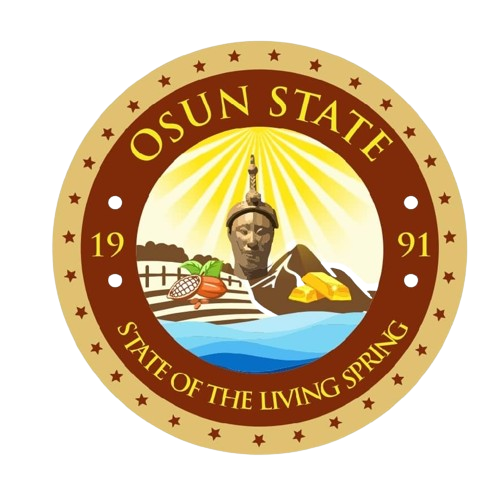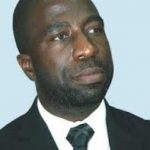
Osun Not Heavily Indebted – DMO

The federal and 36 state governments as well as the Federal Capital Territory owe N10.04tn ($64.51bn) as of December 31, 2013, the Debt Management Office has said.
Statistics obtained from the website of the DMO on Monday showed that 86.32 per cent or N8.67tn of the total debt stock was borrowed from domestic sources, while 13.68 per cent or N1.37tn was borrowed from external sources.
Further analysis showed that the Federal Government borrowed N80.05tn or 80.19 per cent of the total, while the 36 states and the FCT borrowed N1.99tn or 19.81 per cent of the nation’s total debt stock.
Four states with external debt profiles above $100m ranked highest in the external debt stock. These are Lagos with $938,135,517.81; Kaduna, $241,309,864.17; Cross River, $121,966,922.51 and Ogun, $116,802,098.95.
This means that the four states account for 50.36 per cent the 36 states’ total external debt, while Lagos State accounts for 33.31 per cent of the total.
Measured by the debt status of December 31, 2012, the nation’s total debt rose by 11.15 per cent a year after. As of December 2012, the total debt stood at $58.04bn. However, measured by the debt stock of $40.1bn by December 31, 2010; the debt profile rose by 60.87 per cent.
Of the Federal Government’s N8.054tn total indebtedness, N7.12tn or 88.45 per cent was borrowed from domestic sources, while the balance of N935.26bn was borrowed from foreign sources.
By instruments, the Federal Government raised N4.22tn or 59.31 per cent of its domestic debt component through the use of FGN bonds. With the use of Nigerian Treasury Bill, it raised N2.58tn or 36.26 per cent, while Treasury Bonds yielded N315.39bn or 4.45 per cent.
The growth of the nation’s debt stock can be seen in the budget for debt servicing. The Federal Government plans to spend N2.08tn to service the country’s debt in the next three years.
The figures for debt servicing as well as the county’s debt stock are contained in the Medium Term Expenditure Framework and Fiscal Strategy Paper of the Federal Government.
The document stated that while N591.76bn was utilised in servicing the nation’s debt in 2013, the sum of N712bn, N684bn and N684bn would be spent for the same purpose in 2014, 2015 and 2016 fiscal periods, respectively.
The total domestic debt servicing figure as of December 2012 stood at N720.55bn, indicating an increase of 34.08 per cent over the level in 2011.
The total domestic debt service of the Federal Government as a percentage of the total domestic debt stock outstanding was 11.02 per cent in 2012, which was higher than 9.56 per cent recorded in 2011.
According to the DMO, the significant rise in 2011 and 2012 was due to the increase in the cost of borrowing occasioned by the contractionary monetary policy regime, particularly the upward review of the benchmark Monetary Policy Rate by the Central Bank of Nigeria from 6.25 to 12 per cent.
The DMO explained, “The external debt service showed a downward trend, while that of the domestic debt increased significantly.
“The decrease in the external debt service was largely attributable to full redemption of some International Bank for Reconstruction and Development and African Development Bank loans over the period and the reliance on the domestic bond market to largely meet the FGN’s borrowing requirements since 2002.”
The Federal Government had recently expressed concern over the growth of domestic debt stock. The Director-General, DMO, Dr. Abraham Nwankwo, had said that compared to the level of foreign debt, the Federal Government had over borrowed from domestic sources.
Further analysis showed that the Federal Government borrowed N80.05tn or 80.19 per cent of the total, while the 36 states and the FCT borrowed N1.99tn or 19.81 per cent of the nation’s total debt stock.
Four states with external debt profiles above $100m ranked highest in the external debt stock. These are Lagos with $938,135,517.81; Kaduna, $241,309,864.17; Cross River, $121,966,922.51 and Ogun, $116,802,098.95.
This means that the four states account for 50.36 per cent the 36 states’ total external debt, while Lagos State accounts for 33.31 per cent of the total.
Measured by the debt status of December 31, 2012, the nation’s total debt rose by 11.15 per cent a year after. As of December 2012, the total debt stood at $58.04bn. However, measured by the debt stock of $40.1bn by December 31, 2010; the debt profile rose by 60.87 per cent.
Of the Federal Government’s N8.054tn total indebtedness, N7.12tn or 88.45 per cent was borrowed from domestic sources, while the balance of N935.26bn was borrowed from foreign sources.
By instruments, the Federal Government raised N4.22tn or 59.31 per cent of its domestic debt component through the use of FGN bonds. With the use of Nigerian Treasury Bill, it raised N2.58tn or 36.26 per cent, while Treasury Bonds yielded N315.39bn or 4.45 per cent.
The growth of the nation’s debt stock can be seen in the budget for debt servicing. The Federal Government plans to spend N2.08tn to service the country’s debt in the next three years.
The figures for debt servicing as well as the county’s debt stock are contained in the Medium Term Expenditure Framework and Fiscal Strategy Paper of the Federal Government.
The document stated that while N591.76bn was utilised in servicing the nation’s debt in 2013, the sum of N712bn, N684bn and N684bn would be spent for the same purpose in 2014, 2015 and 2016 fiscal periods, respectively.
The total domestic debt servicing figure as of December 2012 stood at N720.55bn, indicating an increase of 34.08 per cent over the level in 2011.
The total domestic debt service of the Federal Government as a percentage of the total domestic debt stock outstanding was 11.02 per cent in 2012, which was higher than 9.56 per cent recorded in 2011.
According to the DMO, the significant rise in 2011 and 2012 was due to the increase in the cost of borrowing occasioned by the contractionary monetary policy regime, particularly the upward review of the benchmark Monetary Policy Rate by the Central Bank of Nigeria from 6.25 to 12 per cent.
The DMO explained, “The external debt service showed a downward trend, while that of the domestic debt increased significantly.
“The decrease in the external debt service was largely attributable to full redemption of some International Bank for Reconstruction and Development and African Development Bank loans over the period and the reliance on the domestic bond market to largely meet the FGN’s borrowing requirements since 2002.”
The Federal Government had recently expressed concern over the growth of domestic debt stock. The Director-General, DMO, Dr. Abraham Nwankwo, had said that compared to the level of foreign debt, the Federal Government had over borrowed from domestic sources.



